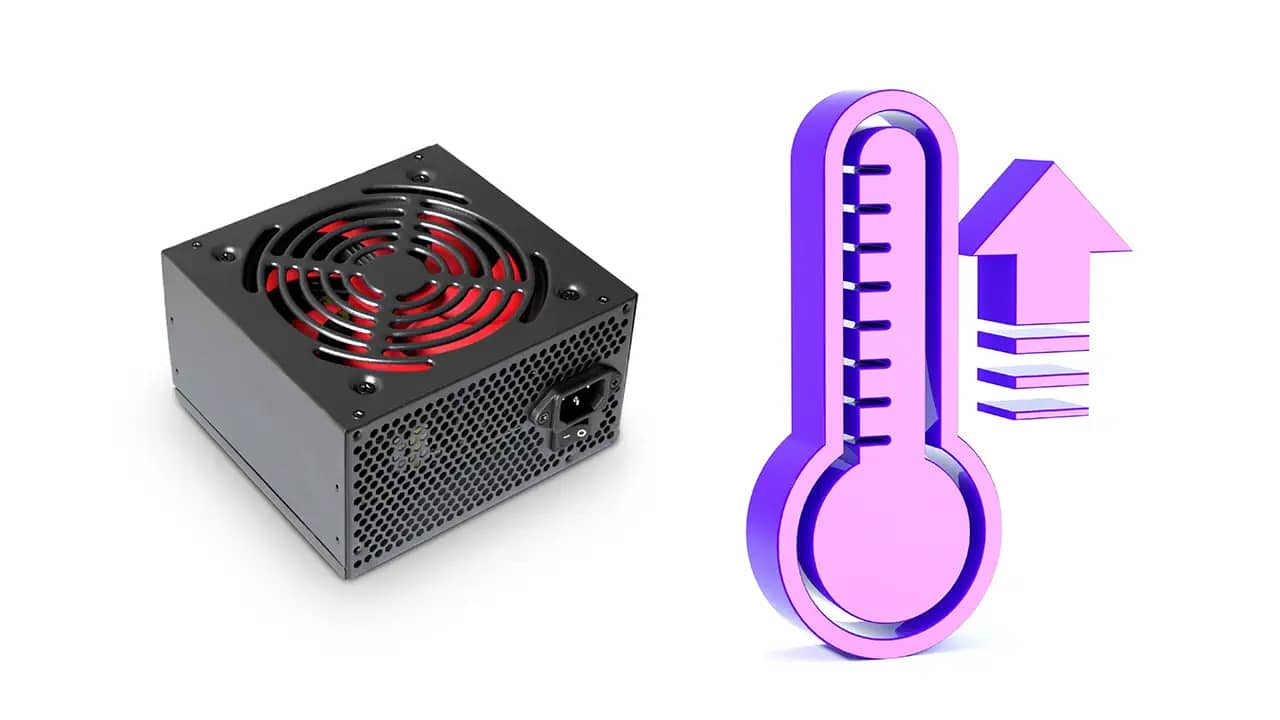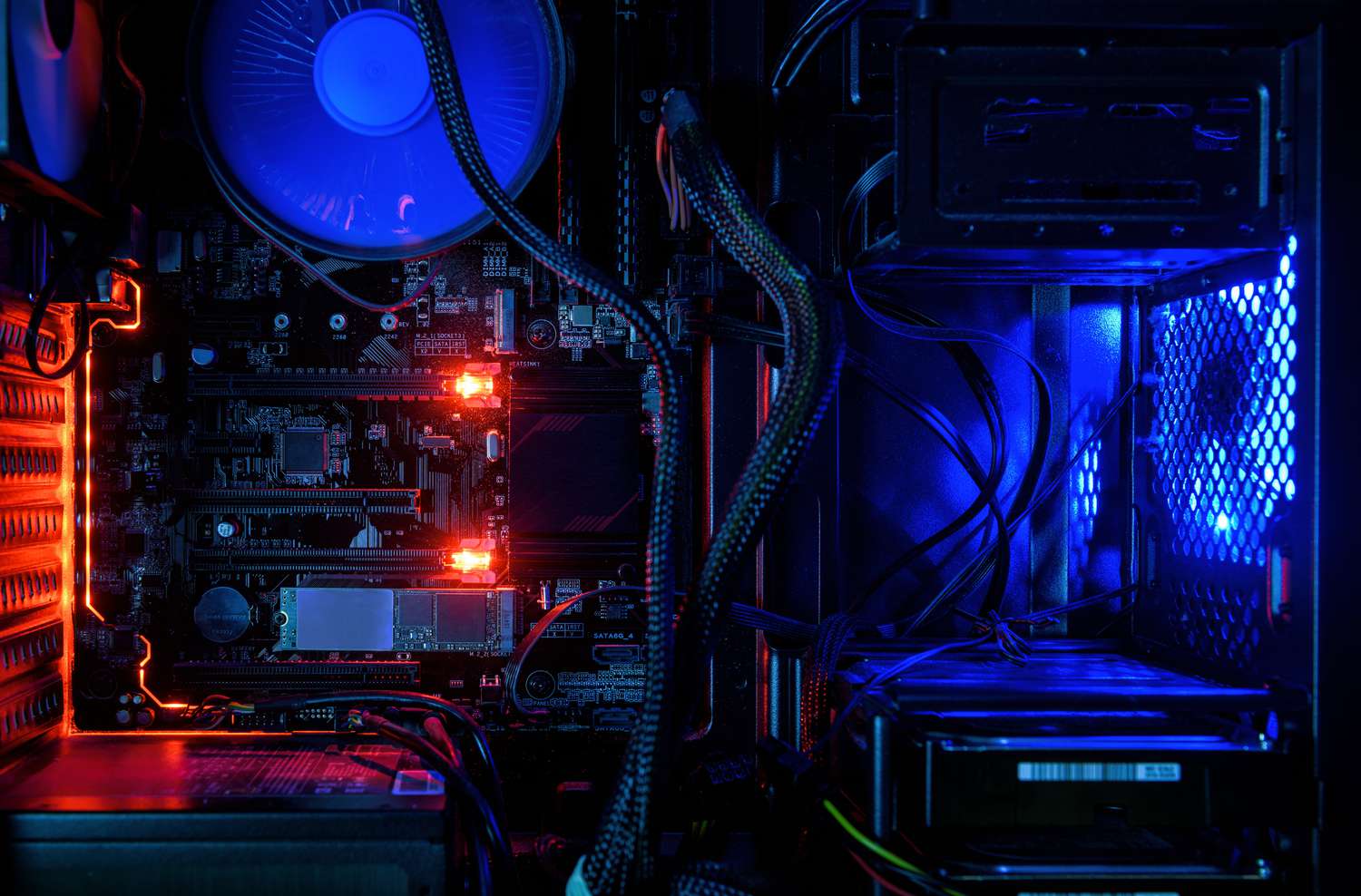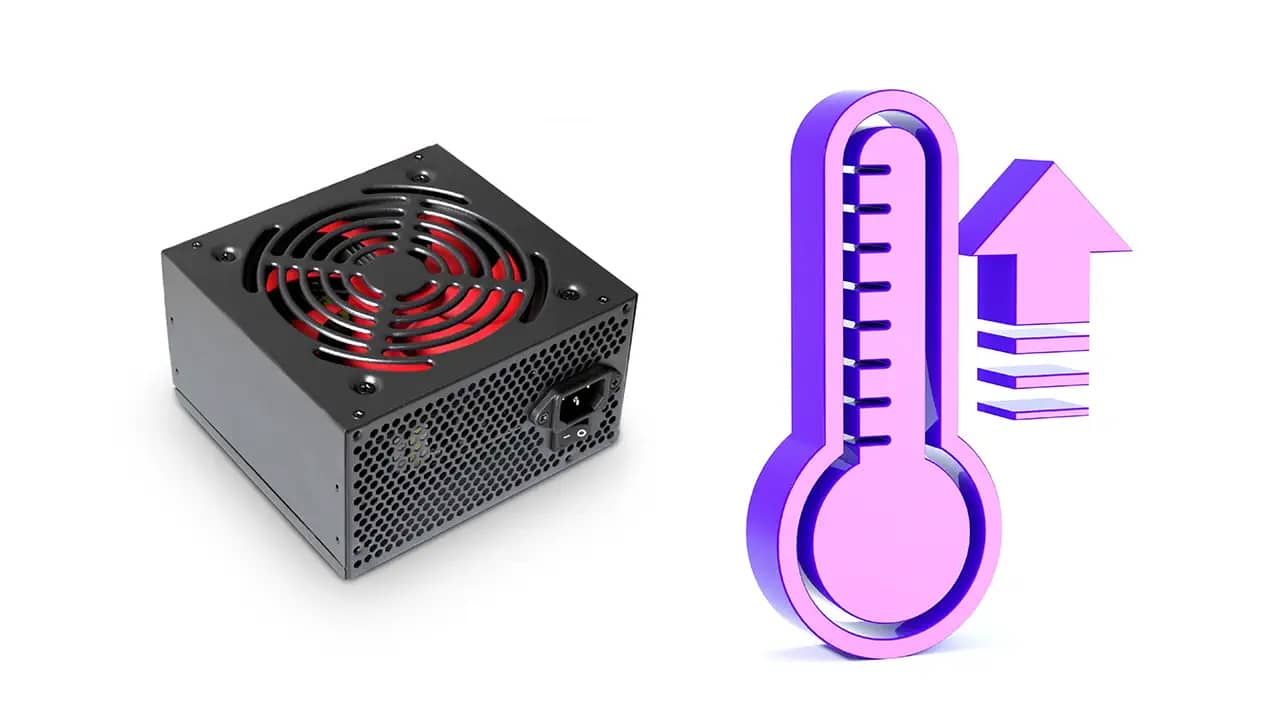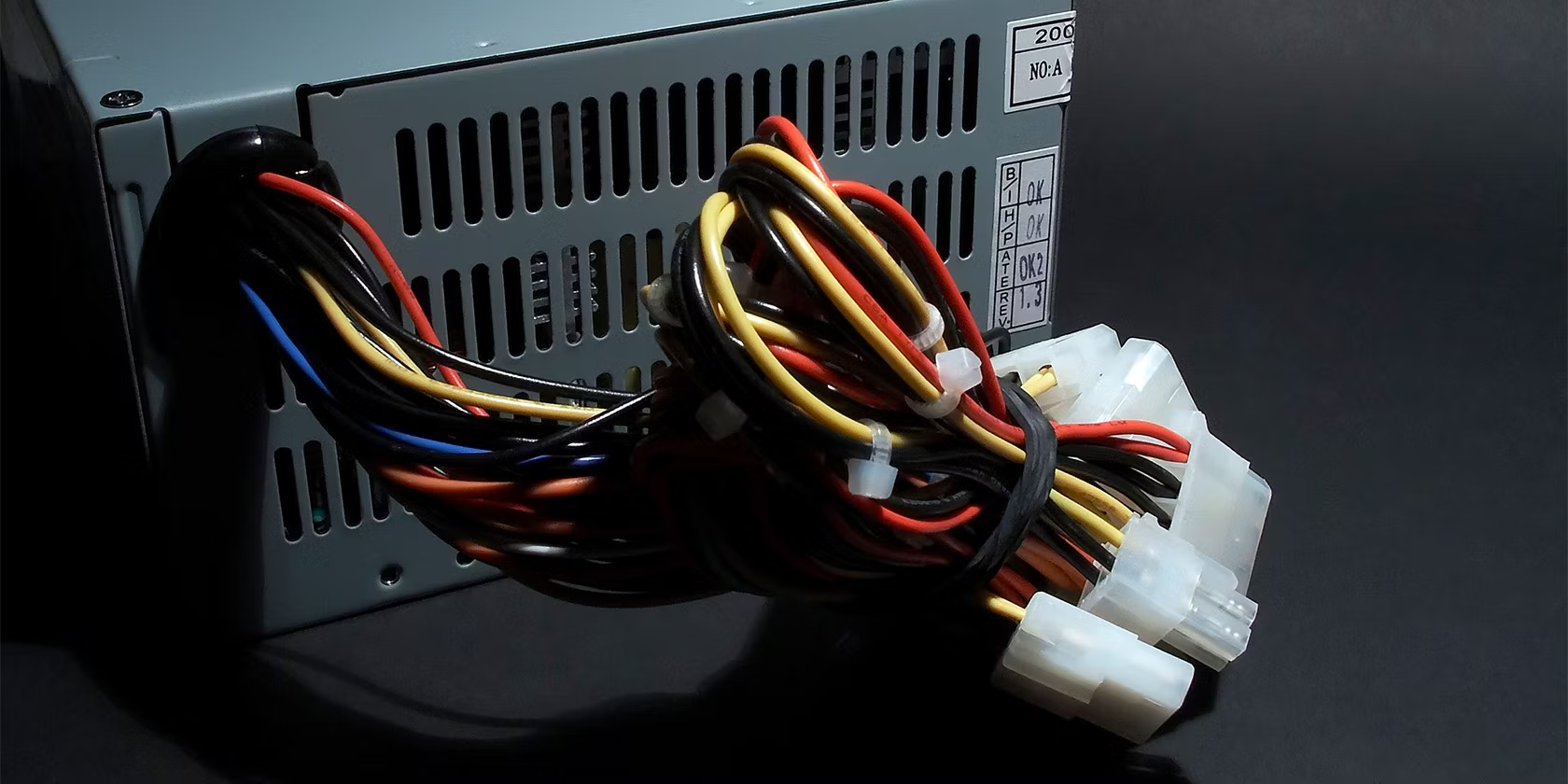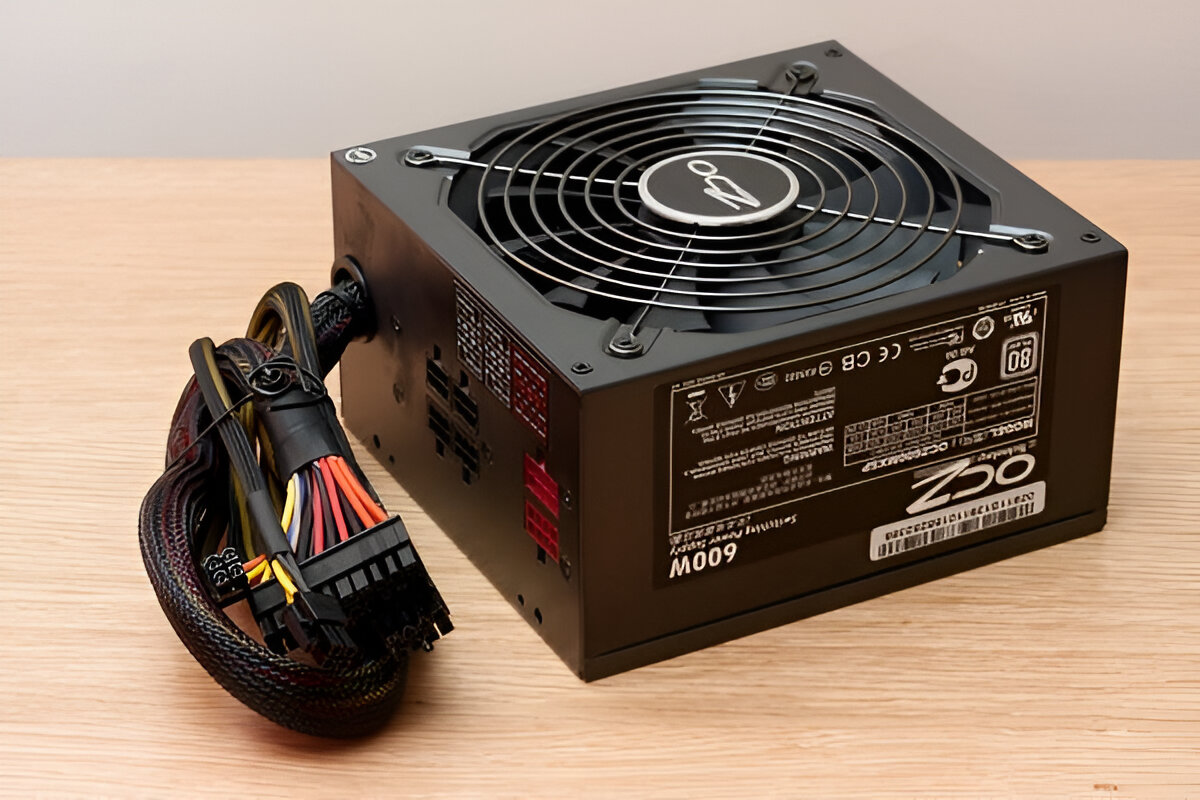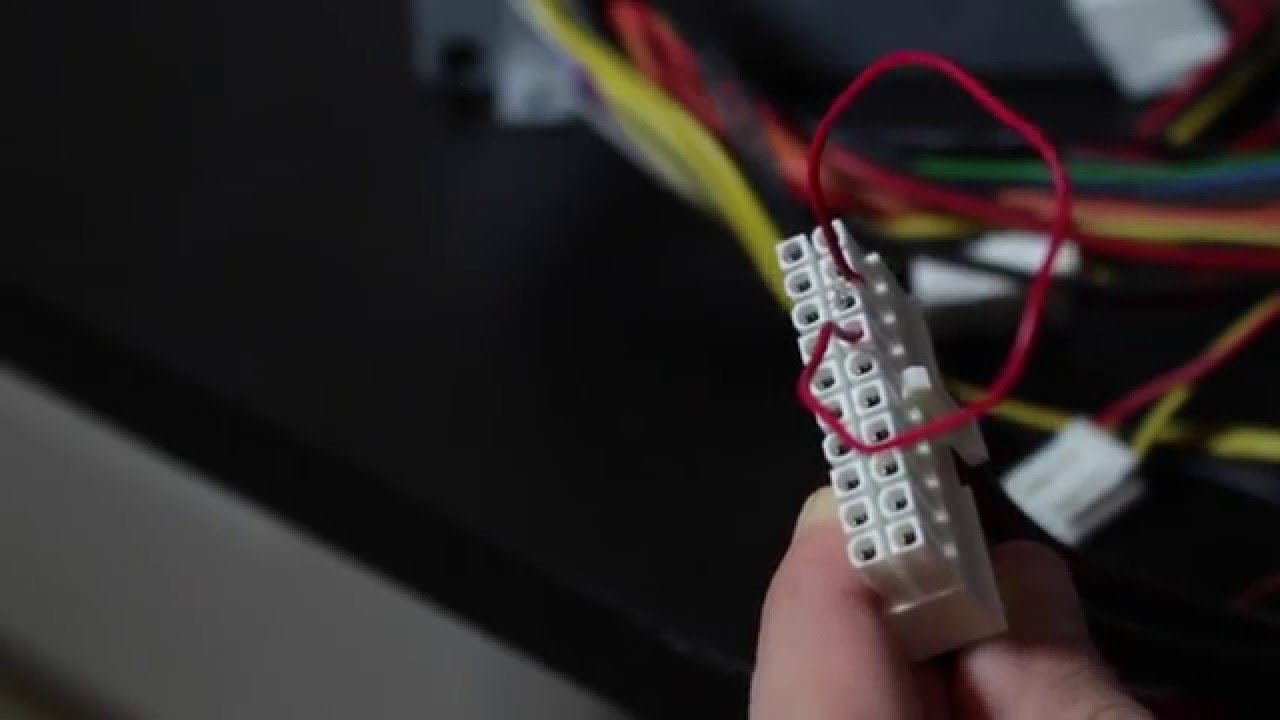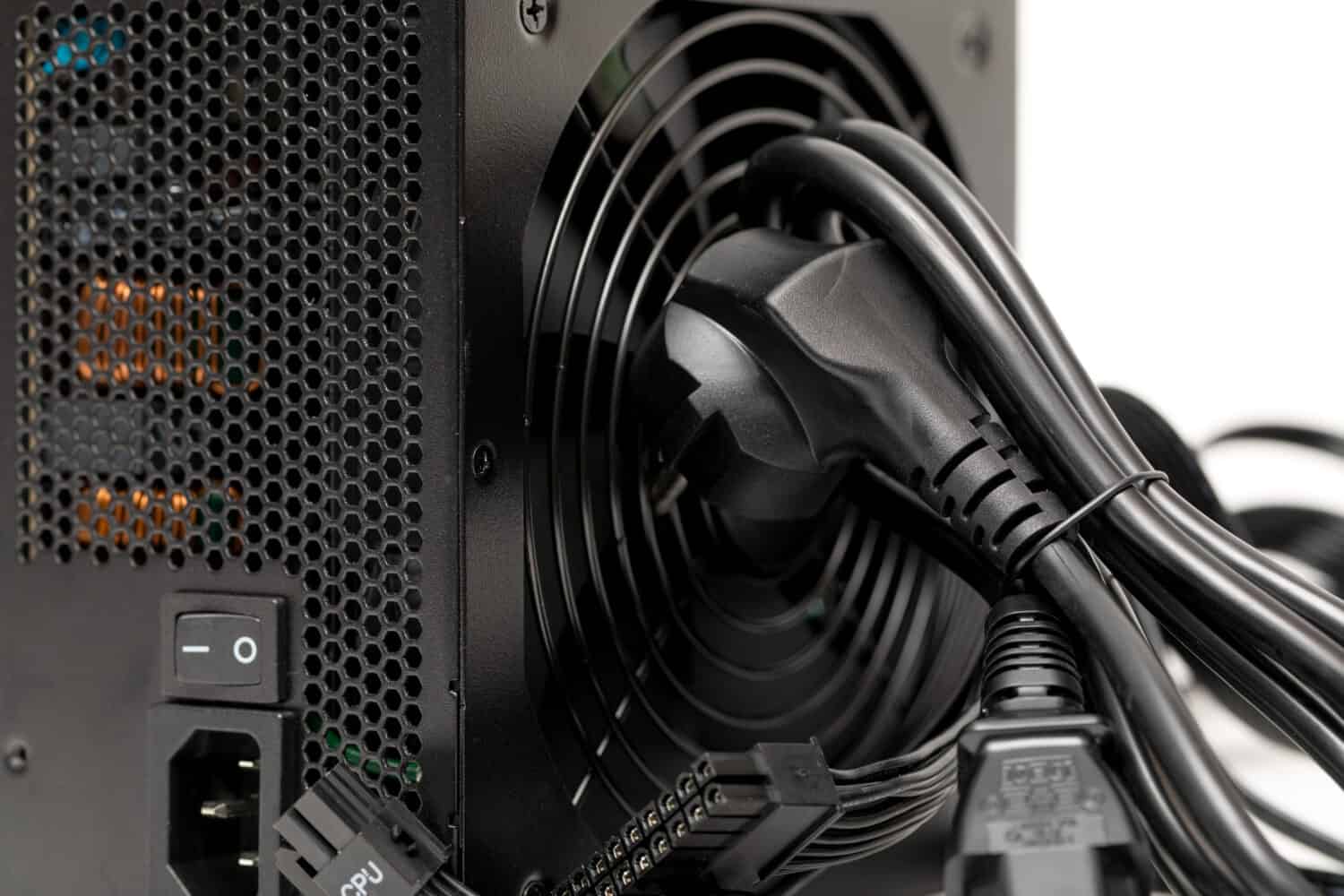Introduction
PSU temperature refers to the temperature of the Power Supply Unit, which is an essential component of a computer system. The PSU is responsible for converting the alternating current (AC) from the electrical outlet into direct current (DC) that can be utilized by the various components of the computer. It provides power to the motherboard, graphics card, hard drives, and other peripherals.
Monitoring the PSU temperature is important for several reasons. First and foremost, an excessively high PSU temperature can lead to system instability and even damage to the components. Heat is the enemy of electronic devices, and prolonged exposure to high temperatures can shorten their lifespan and reduce their performance. By regularly checking the PSU temperature, you can detect any potential issues early on and take the necessary steps to prevent damage to your hardware.
Another reason to monitor PSU temperature is to ensure the overall efficiency of your computer system. Excessive heat can lead to power inefficiencies and increased energy consumption. By keeping the PSU temperature within an optimal range, you can help improve energy efficiency and potentially reduce your electricity bills.
In this article, we will explore different ways to check the PSU temperature and discuss how to interpret the readings. We will also provide some best practices for managing PSU temperature effectively. Whether you are a gamer, content creator, or simply a computer enthusiast, understanding and monitoring PSU temperature can help enhance the longevity and performance of your system.
Why is it important to monitor PSU temperature?
Monitoring the temperature of your PSU is crucial for maintaining the stability and longevity of your computer system. Here are some reasons why it’s important to keep a close eye on PSU temperature:
- Preventing hardware damage: Excessive heat can be detrimental to the components of your computer system. When the PSU becomes too hot, it can cause system instability and potentially damage other hardware components such as the motherboard, graphics card, or hard drives. By monitoring the PSU temperature, you can take proactive measures to prevent overheating and safeguard your valuable hardware.
- Ensuring system stability: High PSU temperatures can lead to system crashes, freezes, and unexpected shutdowns. These issues can disrupt your work, gaming sessions, or any other activities you engage in on your computer. By monitoring the PSU temperature, you can identify any overheating issues early on and address them before they cause system instability, ensuring a smooth and uninterrupted user experience.
- Optimizing performance: Excessive heat can negatively impact the performance of your system. When the PSU temperature rises, it can result in thermal throttling, where the computer reduces the performance of the components to prevent overheating. This can lead to decreased processing power, slower rendering times, and overall reduced efficiency of your system. By monitoring and managing the PSU temperature, you can maintain optimal performance and enjoy a smoother computing experience.
- Improving energy efficiency: Heat is a byproduct of power consumption, and a high PSU temperature indicates inefficiencies in the power supply unit. When your PSU operates at higher temperatures, it consumes more power and generates more heat. By monitoring and controlling the PSU temperature, you can minimize power wastage and potentially reduce your electricity bills. This is not only beneficial for your wallet but also for the environment, as it helps reduce energy consumption.
By actively monitoring the PSU temperature, you can take proactive steps to prevent hardware damage, ensure system stability, optimize performance, and improve energy efficiency. It is an essential aspect of computer maintenance that should not be overlooked.
How to check PSU temperature
Checking the temperature of your Power Supply Unit (PSU) is a straightforward process and can be done using different methods. Here are three common ways to check the PSU temperature:
- Option 1: BIOS or UEFI: Most modern computer systems allow you to access the BIOS (Basic Input/Output System) or UEFI (Unified Extensible Firmware Interface) settings. Within the BIOS or UEFI, you can find information about various hardware components, including the PSU temperature. To access the BIOS or UEFI, restart your computer and press the designated key (such as Del, F2, or F10) during the startup process. Once inside the BIOS or UEFI, navigate to the hardware monitoring section to locate the PSU temperature reading. Note that the specific location of this information may vary depending on your motherboard manufacturer and BIOS version.
- Option 2: PSU monitoring software: Many motherboard manufacturers provide software utilities that allow you to monitor various aspects of your system, including PSU temperature. These utilities typically come bundled with the motherboard drivers or can be downloaded from the manufacturer’s website. Once installed, the software will display real-time information about the PSU temperature, fan speeds, and other relevant data. These utilities often offer customizable alerts and notifications to let you know if the PSU temperature exceeds a certain threshold.
- Option 3: Using hardware monitoring tools: There are third-party hardware monitoring tools available that can provide detailed information about your system’s hardware, including PSU temperature. These tools can provide real-time temperature readings, fan speeds, voltages, and other performance metrics. Some popular hardware monitoring tools include HWiNFO, SpeedFan, and Open Hardware Monitor. These tools often come with customizable options and advanced features for in-depth system monitoring.
Choose the option that best suits your needs and preferences. It’s worth noting that some methods may require you to install additional software or access your system’s BIOS/UEFI settings, while others offer a more user-friendly interface with real-time monitoring. Whatever method you choose, regularly checking the PSU temperature will help you detect any potential issues and take necessary measures to ensure the optimal performance and longevity of your computer system.
Option 1: BIOS or UEFI
One of the common methods to check the temperature of your Power Supply Unit (PSU) is through the BIOS (Basic Input/Output System) or UEFI (Unified Extensible Firmware Interface) settings. This option provides direct access to the hardware monitoring capabilities available on your computer’s motherboard. Here’s how to check the PSU temperature using the BIOS or UEFI:
- Restart your computer. During the startup process, you will need to press a specific key to access the BIOS or UEFI settings. The key varies depending on the motherboard manufacturer but is typically Del, F2, or F10. Check your motherboard user manual or manufacturer’s website for the correct key.
- Once you’ve entered the BIOS or UEFI, navigate to the hardware monitoring section. This section may be labeled differently depending on the BIOS/UEFI version, but it is usually located under the “Hardware” or “Monitoring” tab.
- Look for the PSU temperature reading. The location of the temperature information may vary depending on the motherboard manufacturer and BIOS/UEFI version. It is typically displayed as a numerical value in degrees Celsius (°C) or Fahrenheit (°F).
- Take note of the PSU temperature reading. Ensure that the temperature is within a safe range for your specific PSU model. Consult your PSU manufacturer’s specifications or do some research to determine the optimal temperature range.
By accessing the PSU temperature through the BIOS or UEFI, you are utilizing the embedded monitoring capabilities of your motherboard. This method provides a direct and reliable way to check the temperature without the need for additional software or tools. However, it is worth noting that the options available within the BIOS or UEFI may vary depending on your motherboard model and BIOS/UEFI version. Some motherboards may provide more detailed temperature readings or additional features such as setting temperature thresholds or fan control options.
Using the BIOS or UEFI to monitor PSU temperature allows you to get a quick overview of the temperature without the need for third-party software. It also ensures that you can access the temperature information even before the operating system loads. Monitoring the PSU temperature through the BIOS or UEFI is a convenient and reliable method to help maintain the stability and longevity of your computer system.
Option 2: PSU monitoring software
Another method to check the temperature of your Power Supply Unit (PSU) is through the use of PSU monitoring software. Many motherboard manufacturers provide software utilities that allow users to monitor various aspects of their computer system, including PSU temperature. Here’s how to check the PSU temperature using PSU monitoring software:
- Check if your motherboard manufacturer provides a dedicated software utility for monitoring hardware parameters. This software is usually available for download on the manufacturer’s website or may come bundled with the motherboard drivers.
- Download and install the PSU monitoring software on your computer. Make sure to choose the version that is compatible with your computer’s operating system.
- Launch the PSU monitoring software. It will display a dashboard with real-time information about various components of your system, including CPU temperature, fan speeds, and PSU temperature.
- Locate the PSU temperature reading within the software. Typically, it is displayed as a numerical value in degrees Celsius (°C) or Fahrenheit (°F). Some software may also provide a graphical representation of the temperature trend over time.
- Monitor the PSU temperature and ensure that it remains within a safe range. Consult your PSU manufacturer’s specifications or do some research to determine the optimal temperature range for your particular PSU model.
Using PSU monitoring software offers the advantage of a user-friendly interface that provides real-time information about your system’s hardware. This software often includes additional features such as customizable alerts and notifications when the PSU temperature exceeds a certain threshold. It allows you to keep a close eye on the PSU temperature and take immediate action if any temperature issues arise.
It’s important to note that PSU monitoring software is specific to the motherboard manufacturer and may not be compatible with all systems. If your motherboard manufacturer does not provide dedicated monitoring software, you can explore third-party software options available in the market. These software tools offer similar functionality and can effectively monitor the PSU temperature and other hardware parameters.
By utilizing PSU monitoring software, you can gain more control over monitoring the temperature of your PSU. The software provides a user-friendly interface, real-time monitoring, and additional features to help you maintain the stability and performance of your computer system.
Option 3: Using hardware monitoring tools
If you prefer more detailed and comprehensive monitoring options for your Power Supply Unit (PSU) temperature, you can consider using third-party hardware monitoring tools. These tools provide in-depth information about your computer system’s hardware and offer advanced features for monitoring and managing temperature levels. Here’s how to check the PSU temperature using hardware monitoring tools:
- Research and choose a reliable hardware monitoring tool that suits your needs. Some popular options include HWiNFO, SpeedFan, and Open Hardware Monitor. These tools are available for download from their respective websites.
- Download and install the selected hardware monitoring tool on your computer. Ensure that you download the version compatible with your operating system.
- Launch the hardware monitoring tool. It will scan your system and provide detailed information about various hardware components, including the PSU.
- Navigate to the temperature monitoring section within the tool’s interface. You should be able to locate the PSU temperature reading, typically displayed as a numerical value in degrees Celsius (°C) or Fahrenheit (°F).
- Monitor the PSU temperature in real-time and ensure that it remains within the safe operating range. Refer to your PSU manufacturer’s specifications or conduct some research to determine the optimal temperature range for your specific PSU model.
Hardware monitoring tools offer more advanced features compared to BIOS/UEFI or manufacturer-provided software. They provide detailed and real-time readings of numerous hardware parameters, allowing you to monitor multiple components simultaneously. These tools often come with customizable options, such as temperature thresholds, fan speed control, and historical data logging.
It’s worth mentioning that the specific options and features of each hardware monitoring tool may vary, so familiarize yourself with the software and explore the available settings and configurations. Some tools also offer additional features like alert notifications, system tray icons, and customizable overlays to display temperature information while gaming or using other applications.
Using hardware monitoring tools provides a comprehensive and detailed approach to monitoring your PSU temperature. These tools offer advanced features and customization options to ensure that your computer system stays within safe operating temperatures, optimizing performance and increasing the longevity of your hardware.
How to interpret PSU temperature readings
Interpreting the temperature readings of your Power Supply Unit (PSU) is essential to determine if the temperature is within a safe and optimal range. Here are some key points to consider when interpreting PSU temperature readings:
Optimal temperature range: Each PSU model has its own recommended temperature range specified by the manufacturer. It is crucial to refer to the manufacturer’s specifications or do some research to identify the optimal temperature range for your specific PSU model. Operating your PSU within this range ensures optimal performance and longevity.
Room temperature: When interpreting PSU temperature readings, take into account the ambient room temperature. Higher room temperatures can contribute to slightly higher PSU temperatures. Make sure your computer system is in a well-ventilated area and consider environmental factors that could affect the overall temperature of the room.
Variance based on load: PSU temperature can fluctuate depending on the load or usage of your computer system. Higher loads, such as running demanding applications or playing resource-intensive games, can increase the PSU temperature. Conversely, during periods of low utilization, the PSU temperature may decrease. Monitor the temperature under varying loads to determine any patterns or significant changes.
Fan operation: PSU temperature is directly influenced by the cooling capabilities of the PSU’s internal fan. As the temperature rises, the fan automatically adjusts its speed to dissipate heat and maintain a stable operating temperature. If your PSU temperature consistently exceeds the recommended range or shows signs of overheating, check the PSU fan to ensure it is functioning correctly and consider cleaning any dust buildup that might be impeding proper airflow.
Comparison with other component temperatures: Take into account the temperature readings of other components within your computer system, such as the CPU or GPU. While each component operates within its own temperature range, comparing the PSU temperature with other component temperatures can provide an overall picture of the system’s thermal performance. Ideally, all components should be within their respective optimal temperature ranges.
Trends and changes over time: Monitoring the PSU temperature over an extended period allows you to identify any trends or changes. Sudden and significant increases in temperature may indicate a potential issue with the PSU or overall system cooling. Regularly tracking and comparing temperature readings can help you detect possible hardware failures or cooling problems before they cause system instability or damage.
Remember that the interpretation of PSU temperature readings should be done in the context of your specific hardware configuration, usage patterns, and environmental factors. By understanding the optimal temperature range, considering load variations, monitoring fan operation, comparing with other component temperatures, and tracking trends over time, you can ensure that your PSU remains within safe operating conditions and maintain the stability and reliability of your computer system.
Best practices for PSU temperature management
Managing the temperature of your Power Supply Unit (PSU) is crucial for maintaining the stability and longevity of your computer system. Here are some best practices to effectively manage PSU temperature:
Proper airflow: Ensure that your computer system has adequate airflow to dissipate heat efficiently. Keep the area around the PSU and other components clean and free from dust and obstructions. Remove any obstacles that may block the airflow, such as cables or clutter, and consider using cable management techniques to improve airflow within the system.
Cooling system maintenance: Regularly clean the fans and heat sinks of your computer system, including the PSU fan, to remove dust and debris that can hinder proper cooling. Consider using compressed air or specialized cleaning tools to safely remove accumulated dust. Additionally, monitor the condition of all fans, including the PSU fan, and replace any faulty or aging fans to ensure optimal cooling performance.
Positioning and ventilation: Place your computer system in a well-ventilated area to prevent heat buildup. Avoid placing the system in enclosed spaces or near heat sources, such as radiators or direct sunlight. Allow sufficient space around the system to promote air circulation. Consider using additional cooling solutions, such as case fans or liquid cooling, if your system experiences consistently high temperatures.
Temperature monitoring: Regularly monitor the PSU temperature using the methods discussed earlier, such as accessing the BIOS/UEFI, using PSU monitoring software, or utilizing hardware monitoring tools. Keep an eye on temperature trends, and promptly address any significant increases or changes. Monitoring temperatures allows you to detect potential issues early and take necessary action to prevent system instability or damage.
Upgrade PSU if necessary: If your computer system consistently experiences high temperatures despite following best practices, it may be a sign that your PSU is not adequately sized for your hardware configuration. Consider upgrading to a higher wattage PSU that has better cooling capabilities and can handle the power requirements of your system more efficiently.
Environmental factors: Consider the environmental factors that can affect PSU temperature, such as ambient room temperature and humidity levels. Avoid exposing your computer system to extreme temperatures or humidity, as they can contribute to increased PSU temperature and reduce system reliability. Optimal operating conditions for both the computer system and the surrounding environment help promote efficient heat dissipation.
Regular system maintenance: Perform routine maintenance tasks, such as cleaning your computer system, updating drivers, and applying software and firmware patches. A well-maintained system operates more efficiently and keeps temperatures within acceptable limits.
By implementing these best practices, you can effectively manage the temperature of your PSU and ensure the stability and longevity of your computer system. Proper airflow, regular maintenance, temperature monitoring, and consideration of environmental factors all contribute to maintaining optimal PSU temperature and overall system performance.
Conclusion
Monitoring and managing the temperature of your Power Supply Unit (PSU) is essential for maintaining the stability, performance, and longevity of your computer system. Whether you use the BIOS/UEFI, PSU monitoring software, or hardware monitoring tools, regularly checking the PSU temperature allows you to detect potential issues early on and take the necessary steps to prevent hardware damage and system instability.
Interpreting PSU temperature readings requires considering factors such as the optimal temperature range, room temperature, load variations, fan operation, comparison with other component temperatures, and trends over time. By understanding these aspects and making informed decisions, you can ensure that your PSU remains within safe operating conditions.
Implementing best practices for PSU temperature management, such as maintaining proper airflow, cleaning cooling components, positioning the system in a well-ventilated area, and monitoring temperatures regularly, helps optimize performance and increase the longevity of your computer system. Upgrading the PSU if necessary and considering environmental factors further contribute to effective temperature management.
In conclusion, by actively monitoring and managing PSU temperature, you can protect your hardware investment, improve system stability, optimize performance, and enhance the overall lifespan of your computer system. Incorporating these practices into your regular computer maintenance routine will help ensure that your PSU operates within safe temperature ranges, providing a stable and reliable computing experience for years to come.







